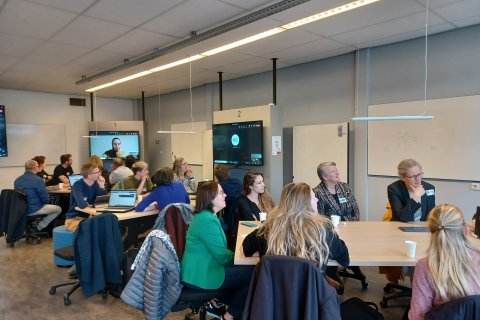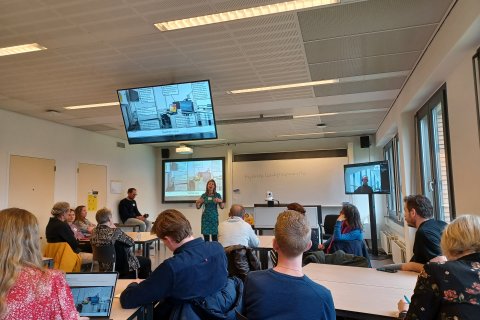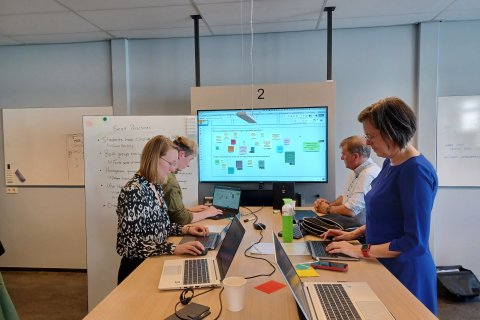Looking back at the open day Future Learning Spaces
On 29 March, the Future Learning Spaces open day took place, organized by the SIG Learning Spaces of SURF and the project Future Learning Spaces of UU. The day was focused on the Future Learning Spaces that have been developed within UU and at the hybrid education that accompanies these learning spaces.
The day appeared to be very popular and was well-attended. The attendees consisted of people interested in Future Learning Spaces from various backgrounds. There were people with an audio-visual, IT or educational background, but also lecturers who use hybrid education themselves.

The day was opened by Jasper van Winden in the Hybrid Active Learning Classroom. Jasper is coordinator of educational innovation at the Centre for Academic Teaching and Learning and chair of the SIG Learning Spaces of SURF. He spoke about his own interest in hybrid education, how he found the Teaching and Learning Lab, the central location for research into new educational methods, and how the design of the various Future Learning Spaces at UU came about.
After the opening, participants had the chance to experience how the Hybrid Active Learning Classroom works. The participants who attended online divided themselves among the multiple hybrid tables in the classroom, where the ones attending on location were seated in small groups. This way, the workings of the classroom could be experienced online as well as on location.

Next, the group was split up to visit two hybrid classrooms. Here, Len Dijstelbloem and Annet van der Riet provided explanations about how the classroom worked and shared their own experiences with it’s uses.
After this, there was time for a visit to the Virtual Classroom. In this session, Margien Bootsma, Julia Kasch and Laurien Jansen explained how this classroom worked. Participants had the chance to take a look in the Virtual Classroom itself and to log in to an online environment to experience the online side of this classroom.
After lunch, it was time for the last session of the day. Michel Jansen took the participants on a more content-based journey about hybrid education. In small groups, thought was given to the didactic and technical side of hybrid education and this made for some interesting questions.

In terms of didactics, questions such as the following arose: Is hybrid education the future? What are the positives and negatives of hybrid education? Are the needs of lecturers and students sufficiently met in the current form of hybrid education?
On the technical side, among others, the following questions popped up: What tools must be provided as a minimum in a functional hybrid classroom? Which devices should lecturers and students be equipped with? Is a tracking camera or touch screen desirable, for example?
One thing that came out of the discussions is that it is good to always consider whether hybrid education adds value to a session where it might be used. Sometimes it is better to choose to work specifically on location for certain sessions, and fully online for others. In terms of technology, an important conclusion was that the weakest link determines the functioning of a hybrid space. It is important to ensure that all components are equally invested in.
It was a successful day that opened many people's eyes regarding the possibilities of Future Learning Spaces and the future of hybrid education. Participants indicated that they were inspired, discovered that a lot is possible and that it is also okay if you are still looking for best practices for hybrid education, or even if you have doubts about the added value of hybrid education in general.
Many questions still need answers in the field of hybrid education. Take a look at the project Future Learning Spaces of UU for more inspiration or join the SIG Learning Spaces of SURF to stay updated about developments in the field and other events focused on Future Learning Spaces!

